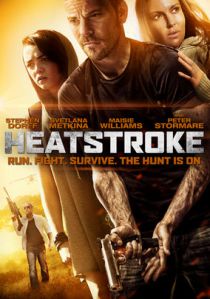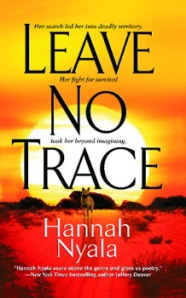 Writing a book, I have learned, is akin to having a child. It is important to begin to let go from the moment of birth, because stories and children have their own lives to lead, and they do it better without parental/authorial interference. Since two of my books have now been adapted for films, I’ve had the great fun of watching this happen twice. At first, of course, it’s hard not to want to get in and fix things, offer ‘notes’ and suggestions, but the creative synergy of film is a great deal more like a combustion chamber engine than an echo chamber of one kingly queen and no more. Learning to trust that, participating when asked but staying well back otherwise? Is far more satisfying to me.
Writing a book, I have learned, is akin to having a child. It is important to begin to let go from the moment of birth, because stories and children have their own lives to lead, and they do it better without parental/authorial interference. Since two of my books have now been adapted for films, I’ve had the great fun of watching this happen twice. At first, of course, it’s hard not to want to get in and fix things, offer ‘notes’ and suggestions, but the creative synergy of film is a great deal more like a combustion chamber engine than an echo chamber of one kingly queen and no more. Learning to trust that, participating when asked but staying well back otherwise? Is far more satisfying to me.
The first Tally Nowata novel, Leave No Trace, has been released as a feature film (titled Heatstroke) this summer, and I watched it again this afternoon with friends who hadn’t yet seen it. At first I missed the deep textures of how a person survives when suddenly adrift in a place for which she has no skills. I missed the struggle between a younger child and tormented woman. I missed the ways that violence haunts the book. I missed the visceral death-grip that the desert itself has on a soul when survival is no longer guaranteed. I missed the person learning at last to work with the environment, not against it, to come alongside instead of control. I reacted with considerable angst at the weirdest things: the IPad (for very personal reasons) and Jo and Tally’s clothes, because they are, indeed, death-dealers for any real survival situation. I very nearly got grumpy at Tally’s skirt fabric, too, because it is gorgeous for wearing but far too thin and unsuitable for the bushveld. The camp, as well, was far too sumptuous for most ecological field camps. And I reacted with particular vehemence to the Paul character’s characterization of wild animals as likely to ‘rip your throat out,’ for that is 180 degrees off my own experiences with such beings. But, of course, I only know these things because I’ve done long months of desert fieldwork or wilderness travel and have actually had to take shelter from a sand storm for a whole afternoon under nothing more substantial than my skirt (which means its warp and woof mattered enormously to me!). No one who hasn’t done that is likely to notice such details. I have also done a great deal of work on desert survival, so I missed all the parts of the book that were about that, coming to terms with that, figuring out how to make it in a hostile land without skills or knowledge for it. Again, though, no one who hasn’t done this would likely notice. It’s hellaciously hard to film a book with characters as interior and reflective as I wrote in Leave No Trace, so the fact that someone had the passion and vision to try? Is worth more from me than a quick look-see. So I have settled in to watch the film with friends or kin three times, and today I liked it better than ever.
The movie deepens each time I watch it (which is no longer common for me with films), and I find more resonances with the book and also more ways to learn from an adaptation that, at first glance anyway, is very different from my original vision. Leave No Trace was set in the Tanami Desert of Australia, the child Jo was younger, the key wild animal was a white dingo, and the way out was dicey not just due to hostile men but because neither food nor water were secured and Tally knew nothing of desert survival skills when she started. Evelyn Purcell, the director of Heatstroke, took Tally to the Karoo in South Africa, turned her into a Russian, gave her more skills and a child that was older and tuned into an IPad, and the dingo became a male spotted hyena named Violet. The time frame was cut down, and the challenges were paired with what someone might run into in southern Africa instead. More importantly, though, Evelyn and Anne Brookbank (co-writer of the script) and the producers at Bold Films did a beautiful job of keeping the core relationships intact, of using in some cases language straight from the book or close to it, and of re-envisioning this tale for a screen. They made the story their own, exactly as I hoped they would do, and that makes for a better tale. Always.
And now I’m beginning to see more of the resonances. Anne and Evelyn asked for my notes on the script as it was taking shape, my ideas for transforming the main characters and dilemmas, and my take on the language, and I can see places where some of our conversations came through. Watching the film now is like looking at a great sea of humanity and understanding that the drop of water that I was upon falling into it? Has become an undistinguishable part of the whole. I treasure that connection and would never wish to have made a sea that looked exactly only like my own personal vision or mirrored only me. The world is too wide for that. We need other storytellers to help us along.
Maisie Williams, Svetlana Metkina, Steven Dorff, and Peter Stormare played the leads beautifully, striking just the right cadences for the characters I was haunted so by in the writing, and I would only have liked to have seen them get deeper into the mix and become more of these remixed versions, carry the film on longer, not reach so quickly the release. Each one, though, brings a certain unique magic to the tale and breaks out of the book’s boundaries to become something else, something more. (Which is precisely why I would be curious to go on alongside them for a longer spell!) The men who did Foy and Bodley, intriguingly enough, were dead ringers for how I saw them in my head. Since I played no role whatsoever in casting, it is fascinating and a bit unsettling to see both these men—secondary, in some ways, to the others—come so fully to life. The dark sides of survival and loss, too, come roaring through this film, and when I sit back and just take it all in, I’m surprised by what we have all wrought together. Now it goes on its little way through the world, touching some lives and not others. Just like a child. Grown up and moving on beyond us, as ever.
~
For a review of Leave No Trace from a reader that ‘gets’ it, see this one at RT Book Reviews.
